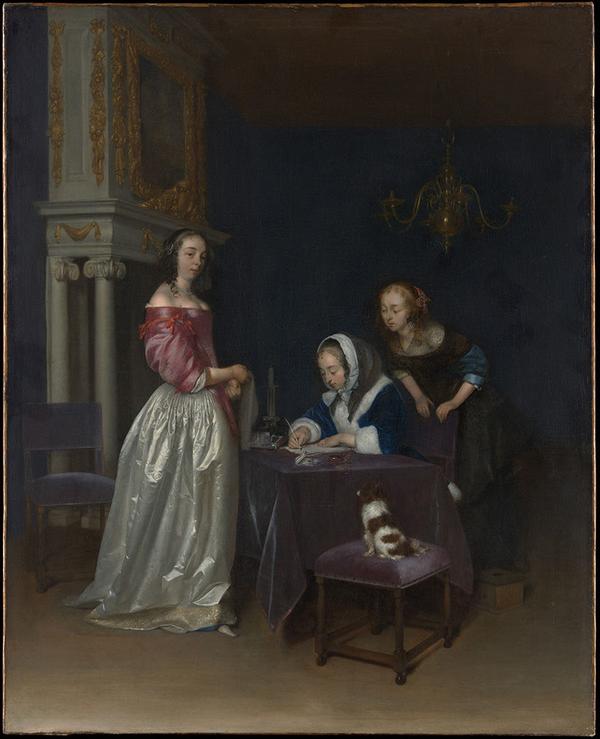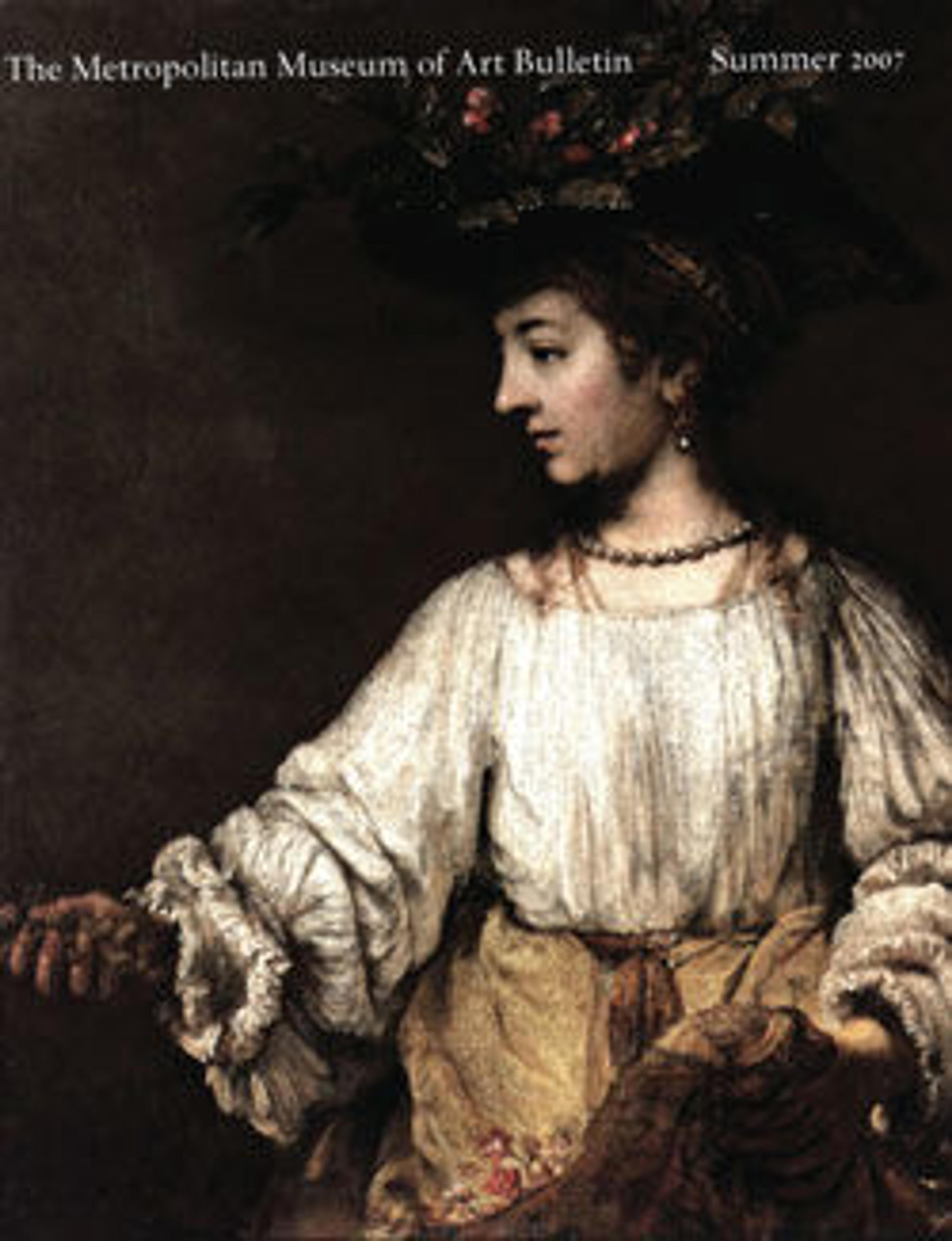Curiosity
In this painting women of different ages occupy a luxurious interior: the eldest writes a letter while the youngest peers over her shoulder. A third woman—dressed in the radiant satin often associated with Ter Borch—appears pensive or lovelorn. Most likely, her older friend is helping her to draft a response to a love letter.
Artwork Details
- Title:Curiosity
- Artist:Gerard ter Borch the Younger (Dutch, Zwolle 1617–1681 Deventer)
- Date:ca. 1660–62
- Medium:Oil on canvas
- Dimensions:30 x 24 1/2 in. (76.2 x 62.2 cm)
- Classification:Paintings
- Credit Line:The Jules Bache Collection, 1949
- Object Number:49.7.38
- Curatorial Department: European Paintings
Audio

5258. Gerard ter Borch the Younger, Curiosity
NARRATOR: This painting is unusual for its era in that it comes with a trove of primary source documentation. The artist’s half-sister, Gesina, who frequently modeled for his paintings, extensively documented her family life in albums. She preserved every detail down to the name of the dog we see on the cushion. His name is Acteon, a figure from Greek mythology notorious for spying on a bathing goddess. Gesina herself was a poet and an artist.
ADAM EAKER: Observing the social life of this very precocious and talented teenage girl seems to have inspired Ter Borch to create a whole new type of imagery based on scenes of young women writing letters, making music, engaging in flirtation. Almost always dressed in this gorgeous satin that Ter Borch was able to paint better than anyone ever has in the history of art.
NARRATOR: The luscious fabric of the skirts, the gilded fireplace, the plush upholstery, and the high ceiling—all these convey an environment of wealth and privilege. The scene is also charged with something else: being off-limits.
ADAM EAKER: Ter Borch’s paintings really tantalize us by showing the behavior of wealthy women when they believe themselves to be unobserved. This is a scene with erotic overtones. One theory is that the beautiful young woman standing on the left has received a love letter, and has asked her more matronly friend to write a response. There's a story going on here, words are being exchanged that we don’t have access to, and that makes them all the more tantalizing to us.
NARRATOR: Ter Borch’s interest in letter writing alludes to another Dutch achievement: increased literacy, especially among women, well beyond that of their European contemporaries.
ADAM EAKER: Ter Borch uses letter writing and reading as a way to gesture toward the interior life. That is something that Ter Borch passed on to his acquaintance, Johannes Vermeer.
More Artwork
Research Resources
The Met provides unparalleled resources for research and welcomes an international community of students and scholars. The Met's Open Access API is where creators and researchers can connect to the The Met collection. Open Access data and public domain images are available for unrestricted commercial and noncommercial use without permission or fee.
To request images under copyright and other restrictions, please use this Image Request form.
Feedback
We continue to research and examine historical and cultural context for objects in The Met collection. If you have comments or questions about this object record, please contact us using the form below. The Museum looks forward to receiving your comments.
